URGENT!
Due to the weather, we are experiencing intermittent power outage and loss of internet. Please expect delays and or rescheduling of appointments during this time. We will reach out to you as soon as we can. Stay warm and stay safe!
Buying or selling a home can be an exciting endeavor, but it also comes with a long to-do list. And one of the most important parts of transferring property is scheduling the home inspection.
Home inspections help sellers or buyers find problems that need to be fixed before a property is finally sold. And once your home inspector sees that everything is clear, you’re good to go! …right?
Well, unless the home in question has a chimney. While home inspectors do complete a brief overview of the chimney, it isn’t nearly extensive enough to note everything that could be wrong. Because of this, scheduling a level 2 chimney inspection with a certified sweep is a must.
Home inspections are done by a qualified home inspector who checks both the interior and exterior parts of a home to see if any defects should be addressed. A home inspection is a non-invasive way of examining a residential property to check for any issues before the property is officially purchased. This allows the buyers the opportunity to either request that these issues be addressed before anything is finalized or to lower the price of the home to something more appropriate to its current state.

While this process does include the chimney, it doesn’t actually require an in-depth overview of the system. In fact, there could be some extensive interior damage that’s missed, leaving the new buyers to face some unpleasant surprises long after the sale is complete.
Chimney inspections are completed by professional chimney sweeps and are done to assess the condition and suitability for use of the chimney, flue and its connecting appliance. However – unlike home inspections that generally include the interior and exterior parts of the house – a chimney inspection solely focuses on the state of the home’s chimney.
There are three levels of chimney inspections. The first will be the most basic overview, and it’s typically what homeowners need to schedule for their regular annual maintenance.
If any major changes have been made to the appliance or – surprise – if you’re buying or selling a home, a level 2 inspection is a must. And level 3 inspections are left for situations where parts of the home or chimney may need to be removed or demoed to get the root of the problem (these are less common).
According to the International Association of Certified Home Inspectors, home inspectors only inspect visible and readily accessible portions of the chimney.
Long story short – home inspectors aren’t chimney professionals. And while they do a necessary and important job in the home buying/selling process, when it comes to the chimney, only a qualified and knowledgeable sweep should be trusted to properly assess it.
According to the Chimney Safety Institute of America (CSIA) and the National Fire Protection Association (NFPA), a level 2 chimney inspection is needed for all properties that are for sale.
If there’s an issue in the chimney, a level 2 inspection is sure to spot it.
Inspections are important when buying or selling a home, but they’re something you should schedule annually too. A chimney inspection gives your chimney company the opportunity to detect and fix issues within your chimney well before they get worse, so that your system can stand strong – and operate safely – for years to come.
You may also be experiencing excess buildup, which can be a fire hazard and will invite drafting and airflow issues. Chimney inspections reduce the risk of carbon monoxide exposure – a toxic gas that can pose a great threat to your whole household – as well as chimney fires.
The team here at Lords Chimney specializes in chimney, fireplace, and dryer vent services. For over 17 years, Lords Chimney has been providing the highest quality of service for homes and residents in the whole Houston area, and we would love to prove ourselves to you too.
We are fully certified, experienced with a range of chimney and fireplace types, and know how to properly check, clean, and fix any chimney issue. If you have any questions, give us a call at 281-497-4000 or book online today.
Do you hear scratching sounds throughout your house or smell foul odors from the fireplace? If so, you just might have unwanted animals in your chimney.
However, there’s no need to panic. With our experts on your side, you can prevent these unwelcome guests from causing bigger problems. The Lords Chimney crew is here to discuss the basics of animal removal, including signs to watch out for, the risks you face, and how to protect your home from a future intrusion.
Having small creatures in your flue might seem harmless, but it’s best to hire wildlife removal services as soon as possible to protect the health and safety of everyone in your home. Let’s go through some of the common signs of animals in your chimney.
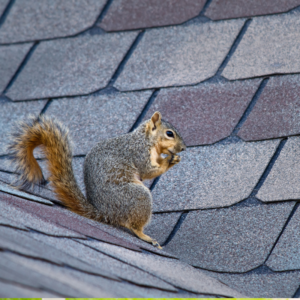 Fur & Feathers: In addition to droppings, you might also notice fur and feathers on your roof or fireplace. Once you see these signs, it’s a safe bet that they’re living in your flue. Birds, squirrels, and raccoons are the most popular chimney dwellers.
Fur & Feathers: In addition to droppings, you might also notice fur and feathers on your roof or fireplace. Once you see these signs, it’s a safe bet that they’re living in your flue. Birds, squirrels, and raccoons are the most popular chimney dwellers.If you notice any of the signs above, schedule a chimney evaluation immediately.
Animal removal services are the only way to remove your uninvited guests and restore your home to the calm and clean state it was in before. We’ll walk you through the ways in which these intruders can threaten your peace and damage your home.
So, how do you keep animals out of your chimney? We recommend the strategies below.
 Seal Your Home: The easiest and most convenient way to keep animals out of your property is to seal your home. We recommend installing a quality and properly-sized chimney cap to achieve this. It’s also ideal to close any other openings in your home, including roof vents and any small gaps and cracks in your roof or walls.
Seal Your Home: The easiest and most convenient way to keep animals out of your property is to seal your home. We recommend installing a quality and properly-sized chimney cap to achieve this. It’s also ideal to close any other openings in your home, including roof vents and any small gaps and cracks in your roof or walls.Trust us on this – when it comes to unwanted animal guests, prevention is better than cure. If you’re interested in putting up some safeguards to prevent creatures from entering your home, we’re here to help.
At Lords Chimney, our technicians boast unmatched experience, and we use the latest technology to keep our customers’ chimneys, fireplaces, and dryer vents in peak condition all year long.
Call us now at 832-280-9233 or reach out online to request a free, no-obligation quotation.
According to The National Association of Realtors (NAR), a property’s value can increase an additional $12,000 when a working fireplace is in the home. Not only do they improve aesthetics, but they help create a more comfortable home and can help lower energy costs. However, there are some downsides to having a chimney in your home…
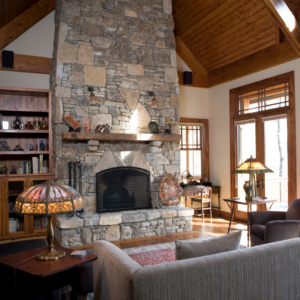 Chimneys offer a path to the outdoors. Which means, when temps are cooler, that cold air can pass through the chimney and make your house appear colder than it actually is. And the opposite is also true when warm air seeps through on hotter days – you’ll need to kick up the air conditioner, which then ups your bills.
Chimneys offer a path to the outdoors. Which means, when temps are cooler, that cold air can pass through the chimney and make your house appear colder than it actually is. And the opposite is also true when warm air seeps through on hotter days – you’ll need to kick up the air conditioner, which then ups your bills.
Fortunately, there’s a solution to this issue – top sealing dampers.
A fireplace damper works as a door to allow flue gases and smoke out when your fireplace is hosting a fire, and to keep cold or warm air from entering the home while the fireplace is not being used. Most masonry fireplaces in homes typically have a throat damper, but sweeps nowadays are encouraging homeowners to switch to a top sealing option.
What’s the difference between the two? Well, to start, a throat damper is located right above the firebox. A top sealing damper, on the other hand, is located at the top portion of the chimney – hence the name. And, while throat dampers have been offering suitable protection for decades, there’s no denying a top sealing damper simply does a better job.
A traditional throat damper over time can warp, become stuck or jammed, or rust from exposure to moisture and extreme heat. All of these things cause a less efficient seal, which can then lead to all kinds of problems. A top sealing damper, on the other hand, is made of stainless steel, so rust or corrosion is not a problem. It also has rubber gaskets designed to create an airtight seal between the chimney flue and the outside.
How else are top sealing dampers better than throat fireplace dampers? Here’s what you need to know:
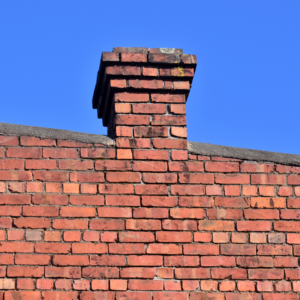 Save More on Energy: Top sealing dampers help save energy due to the airtight seal they provide. This means they close the entire length of the fireplace, including the neck or the flue system. As a result, there is zero air moving through the chimney, which ensures the interior temperature of the house isn’t affected at all. Throat dampers definitely can’t offer this heightened level of protection.
Save More on Energy: Top sealing dampers help save energy due to the airtight seal they provide. This means they close the entire length of the fireplace, including the neck or the flue system. As a result, there is zero air moving through the chimney, which ensures the interior temperature of the house isn’t affected at all. Throat dampers definitely can’t offer this heightened level of protection.If you have an older home, chances are you have a throat-sealing damper. If you’re having the chimney repaired, or even cleaned, this may be the perfect time to make the switch from a throat damper to a top sealing alternative. Creating the change isn’t hard, won’t take more than a day, and can be easily integrated during normal maintenance procedures.
Most chimney professionals in Houston recommend using top-sealing dampers for all of the reasons above. They’re simply easier on your property as a whole. By making the switch, you’ll find that keeping your chimney in good working condition is much easier, and you’ll be able to use your system with ease and peace of mind year after year.
With energy prices continuously rising, we understand the value of producing top-quality work that helps achieve energy efficiency goals for every household. We’re committed to helping you achieve the results you’re hoping for through quick, quality, and reasonably-priced work. Contact us today for a consultation!
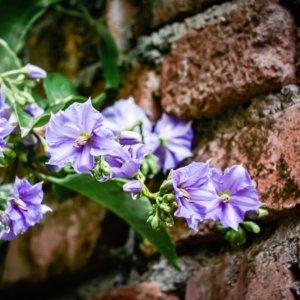 It’s springtime, which means many are thinking of cleaning out their spaces and embarking on new home projects. And if your fireplace is something you’re looking to update or improve, then you know there’s only one team to call for the job… the crew here at Lords Chimney.
It’s springtime, which means many are thinking of cleaning out their spaces and embarking on new home projects. And if your fireplace is something you’re looking to update or improve, then you know there’s only one team to call for the job… the crew here at Lords Chimney.
We have all kinds of options for improving the look or function of your heating system, and we offer a long list of repair services, too, ensuring all your bases will be covered when you start your burning this upcoming fall. Ready to get going? So are we! Reach out now.
Looking to update the look of your fireplace or living space without doing a major renovation or overhaul? Then a facelift may be the right path for you. This is essentially the process of replacing the face of your fireplace with something new, even potentially changing up the material used in the process – choose from brick, stone, tile, and more.
Working within your budget and preferences, we can help replace your entire unit if that’s the right path for you. For a more traditional look, we can install a masonry system, but if you’re looking for something easy to install and affordable, a prefabricated unit may be a better option. We can also talk with you about your options with gas logs or gas log conversions.
Interested in a fireplace insert? These are known for their efficiency and can offer an effective and easy route for switching fuel types. Many opt for this route if they’re sick of the upkeep involved with wood-burning systems and are ready to switch to gas. Sound familiar? Call today to further discuss your options!
Has your mantel seen better days? We can set you up with either a custom or pre-made option, improving the look of your entire fireplace significantly in just one easy step. This not only improves the aesthetic of your space, but can help up the resale value, too. (In fact, all of our improvement options will increase the value of home quite a bit.)
We pride ourselves on offering a long list of mantel varieties to explore, so you’re sure to find something that fits in with your decor and setup, no problem.
Sometimes it’s the little things that really make your appliance more personalized and truly yours. Our fireplace accessories offer both functional and cosmetic improvements, and include things like gas logs, fire screens, fireplace grates, glass doors, tool sets, and more. If any of these sound like they’d make a great addition to your space, please don’t hesitate to reach out.
If any parts of your chimney’s anatomy are suffering, now is a great time to have these replaced, too. This could include your chimney cap, chase cover, or damper. We can also rebuild or repair your chimney crown, as well as make improvements or repairs to your firebox or chimney liner.
Basically… whatever repairs or replacement parts your system needs to withstand it all throughout your burning season, we can set you up.
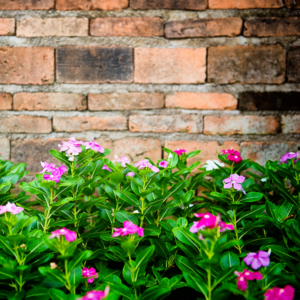 Summer will be here before we know it, and summertime inspections are ideal for getting your fireplace maintenance done early and conveniently. Not only will scheduling early make it easier to book a spot (since our busy season won’t start until fall), but come that first chilly evening, you can happily enjoy your fireplace with ease, knowing everything is good to go and in working order.
Summer will be here before we know it, and summertime inspections are ideal for getting your fireplace maintenance done early and conveniently. Not only will scheduling early make it easier to book a spot (since our busy season won’t start until fall), but come that first chilly evening, you can happily enjoy your fireplace with ease, knowing everything is good to go and in working order.
If you need repairs, sweepings, or updates, now is the time to get it done! Give the quality techs at Lords Chimney a call today to get started.
Why is Lords Chimney the team so many throughout Houston and its surrounding cities turn to? Well, our experience and professionalism is simply unmatched, and we work hard to maintain certifications and attend training seminars, ensuring we stay educated and up-to-date on all industry news.
We also work hard to offer that exceptional, personalized service that we know you deserve. We not only repair fireplaces, but aim to educate our customers about them, too, so that they can use their systems as safely as possible. Long story short… we listen to your needs and take your concerns seriously.
If you’re ready to work with our experts, then don’t hesitate any longer. Pick up your phone and give us a call at 281-497-4000 to set up your appointment! You can also conveniently reach out to us online. We look forward to working with you soon.
There’s never a bad time to think about chimney care, and one of the most common issues homeowners face when it comes to chimney damage is water exposure. The Chimney Safety Institute of America (CSIA) has actually named water chimney’s biggest enemy, so you know leak-related damages are nothing to underestimate!
And what’s one of the most effective ways to prevent water damage? Chimney waterproofing!
Here’s the lowdown on the more common ways water damages your chimney…
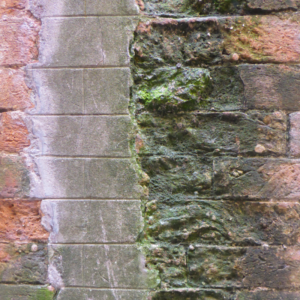 Wood Rot: As water damages your chimney, it won’t be long before it starts working its way into your home, as well. This results in any adjacent woodwork becoming weakened and rotted.
Wood Rot: As water damages your chimney, it won’t be long before it starts working its way into your home, as well. This results in any adjacent woodwork becoming weakened and rotted.As for spotting it, be sure to keep an eye out for discoloration on your brickwork. It could be green, which indicates mold or vegetative growth, or you may even notice some white efflorescence, which is a clear indication that water is wreaking havoc.
You might also notice water pooling in your fireplace or hear dripping coming from the inside. This is a good indicator that your cap is damaged or potentially missing altogether.
Smelling something unpleasant? Water can mix with your creosote to create bad campfire-esque smells, or you may notice some musty/moldy odors, too.
Finally, be sure to keep an eye out for obvious signs of cracking, decay, or crumbling. If your bricks are missing or cracked, or if your mortar joints seem to be falling out and deteriorating, then water is the likely culprit, and you’ll need some repairs completed before moving forward with any fireplace usage.
Yep! Repairs should be completed before investing in waterproofing to ensure the most effective results. Fortunately, the team at Lords Chimney is qualified to address just about anything you’d need done, so you can work with us from start to finish – no matter the current state of your chimney.
Call on us for tuckpointing, flashing repairs, chimney cap replacements, crown rebuilds, and more. We’re confident we can handle whatever you throw our way!
Are you known throughout your neighborhood for tackling an endless line of DIY projects? If so, you’re probably thinking… why not just buy my own sealant and do the job myself? This isn’t an uncommon thought for homeowners in our service area, and while it sounds foolproof enough, it’s not something we recommend.
One issue with these store-bought products is that many leave behind an unsightly film or glossy shine, which is is the last thing you want in a masonry structure. Some can even cause discoloration, leaving you with more of a mess than you started with.
The bigger problem, though, is that the waterproofing products need to be vapor permeable, otherwise your chimney will continue to suffer. Professional waterproofing products are formulated to meet these requirements, ensuring any moisture already trapped inside of the brickwork can still eventually vent out.
Long story short – your brickwork needs to breathe! This is why trusting a professional throughout the process is so important. …and why store-bought products can wind up causing more harm than good.
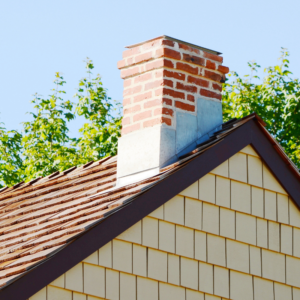 Yes! Bricks are known for their strength and durability, but bad weather and moisture will always win out in the end. Chances are your system has, in fact, already suffered quite a bit of damage. You’re just not noticing it because it’s hidden or in the form of small, hard-to-notice cracking. Unfortunately, there will come a time when these minor issues turn into big (and expensive) repairs. And the longer you put off repairs, the worse off you’ll be.
Yes! Bricks are known for their strength and durability, but bad weather and moisture will always win out in the end. Chances are your system has, in fact, already suffered quite a bit of damage. You’re just not noticing it because it’s hidden or in the form of small, hard-to-notice cracking. Unfortunately, there will come a time when these minor issues turn into big (and expensive) repairs. And the longer you put off repairs, the worse off you’ll be.
In fact, not only is waterproofing a must, but so are annual inspections. Like we said, damages can easily remain hidden for quite some time, so you could be at risk every time you light a fire without even knowing it. It’s through these seemingly minor damages that smoke, fumes, toxic gases, and fire can escape into your home and put those within it at risk.
In addition to the sides of your masonry chimney, we also recommend waterproofing your crown and your chimney flashing. The crown is what actually directs the water away from the sides of your brickwork, and the flashing protects the vulnerable spot where your roof and chimney meet, so both play a vital role in leak prevention – and need adequate protection because of that.
Since your chimney chase isn’t made from brick and mortar, our masonry waterproofing products obviously won’t be as useful on a prefab chimney. That said, prefab systems still need protection from water damage! What will be most beneficial is a quality chase cover, which is essentially the crown of a factory-built set-up.
Most systems come with their own chase cover, but these stock models don’t typically hold up for very long. Investing in a long-lasting, high-quality model (and having it professionally installed) is always going to be your best bet – and it will save you hundreds in repairs down the line.
Need chimney care this spring and summer? Now’s the time to call! Reach out soon, so you’re all set and ready when the busy fall season comes back around. We look forward to speaking with you!